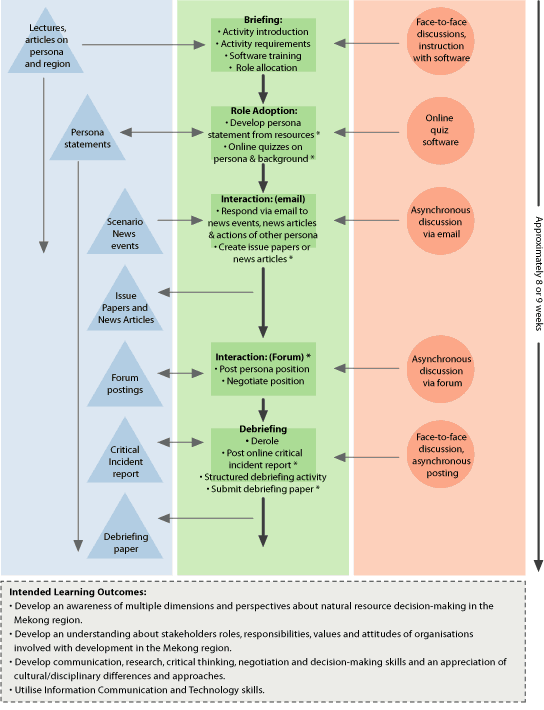|
SUPPORTS SUPPLIED
The e-Sim scenario design involves identifying relevant personae
and then designing scenario news events that create collaborative
opportunities for students. Students form collaborative teams
with defined roles (group personae) and can utilise case studies,
analyses of newspaper reports from a region and public inquiries
into issues.
The e-Sim manager provides primary learner support centrally
to all students via discussion forums and information resources.
They control the release of scenario news events, the quizzes,
central student feedback, monitor the performance of various
persona through Course Management System, access statistics
and email generation. Information of potential group dysfunction
due to inadequate persona performance is then passed to e-Sim
teaching staff at the relevant institution where the students
are located.
The e-Sim teaching staff at each of the institutions provide
support in face-to-face mode (e.g. running briefing and debriefing
sessions, addressing group interaction issues and providing
supplemental resource material). The e-Sim teaching staff
contextualise the e-Sim learning activity to the particular
course/subject that the students from that institution are
undertaking.
SIGNIFICANT SUPPORT STRATEGIES
The primary Learner support is provided through the Course
Management System. It is through this system that communication
and the potential for collaborative learning between the students
occurs.
The delegation of learner support from a single e-Sim manager
to teaching staff at each of the implementing institutions
needs to be negotiated between participating staff.
SUPPORT STRATEGY ADAPTATION
Learning support through participation in the online quiz
may be considered optional. Face-to-face sessions are used
to support the development of critical reflective practice
and for specific group-interaction activities. These are considered
critical.
|
